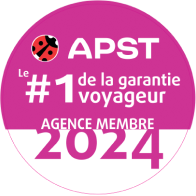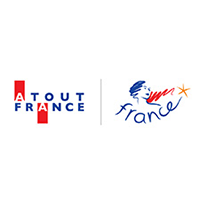Cambodia
Ratanakiri is a Cambodian province often referred to as the Khmer Far West. It is one of the most natural and remote areas of Cambodia. During your visit, you will discover on this uncharted land the authenticity of the Cambodian environment, which radiates a sense of peace and tranquility. If you're looking for adventure and off-the-beaten-path trekking, this destination will transport you into a dream journey.
History
The history of this region is marked by a series of foreign dominations and exploitations. Originally occupied by Annam, Champa, and the Khmer Empire, Ratanakiri Province was frequently targeted by slave traders from the Khmer, Lao, or Thai kingdoms. It was controlled by a Laotian prince in the 18th century and by the Siamese Empire in the 19th century. From 1893 to 1953, it was also under the French Indochina protectorate.
From 1966 and for three years, this region became a grazing ground for the Viet Cong. In 1969, King Norodom Sihanouk of Cambodia even acknowledged that it had become a northern Vietnamese-controlled area. This Vietnamese dominance was pushed back by the United States through successive bombings from March 1969 to May 1970. During this period, Lumphat—the regional capital at the time—was destroyed, giving Banlung the opportunity to become the new capital of Ratanakiri.
Geography
Ratanakiri lies on the high plateaus of northeastern Cambodia. Located 636 km from Phnom Penh, it borders Laos to the north, Vietnam to the east, Mondulkiri to the south, and Steung Treng to the west. It is the last port on the Mekong Basin before reaching Champassak in Laos. The region is crossed by the Tonlé San and Tonlé Srepok rivers. Its landscape features hills, mountains, plateaus, plains, watersheds, and crater lakes.
Today
Covering a vast area of 10,782 km², Ratanakiri is divided into 9 districts and 50 communes. It is home to over 240 villages named using Thai or minority languages native to the province.
In 2008, the population of Ratanakiri was estimated at around 150,000 people, the majority of whom belong to the Khmer Loeu hill tribes. This group comprises eight proto-Indochinese ethnic minorities, including the Tampuan, Jaraï, Kreung, Bru, Kachok, Kavet, Kuy, and Lun peoples. They are considered the original inhabitants of the region.
Ratanakiri remains one of the least developed regions in Cambodia. Indigenous villagers live off subsistence farming, using slash-and-burn techniques. They mainly cultivate cashew nuts, peanuts, mangoes, and tobacco. However, the vast agricultural lands are generally owned by wealthy Cambodians or Vietnamese. In addition to agriculture, mining and logging are also part of the region’s economic activities.
The region is home to a wide variety of natural landscapes. Known for its dense tropical forests, which cover nearly 80% of its area, it also offers lush hills, towering mountains, and extensive plantations. Visiting these natural treasures gives a true sense of disconnect from the modern world.
For more active travelers, biking offers a great experience. Visitors can rent a motorbike or bicycle—these are the most practical means of transportation to explore the enchanting natural scenery and the long dusty orange trails.
With its peaceful and natural ecosystem, the region is perfect for trekking. To explore the province’s biodiversity, this activity is both entertaining and educational. Travel providers organize numerous multi-day itineraries, usually lasting between three and five days. On foot or on the back of an elephant, the most exciting treks include visits to Virachey National Park and Yeak Laom Lake, encounters with remote tribes, exploration of lush forests, and boat rides along the O’Lalai River.
The region’s economy also relies on the tourism sector. The tourism industry is beginning to thrive. In an effort to protect the environment and develop the local economy, the provincial government promotes ecotourism activities. Between 2001 and 2008, the number of visitors rose to 90,000. During your visit, you’ll find several natural attractions that are truly breathtaking and captivating.
Yeak Lom Volcanic Lake
Located 5 km from Banlung, Yeak Lom is one of Ratanakiri’s must-see sites. It is a volcanic crater lake that formed over 700,000 years ago. With a depth of over 48 meters, this site is well-known for its crystal-clear waters. The lake and its surrounding area are considered sacred. Hill tribes believe the lake is inhabited by protective spirits.
Banlung Town
Since 1979, Banlung has remained the provincial capital. It is a small provincial town shrouded in a cloud of red dust, earning it the nickname “Red City.” The most notable attraction is the ethnic minority market. It is often said that without a visit to this market, a trip to Ratanakiri is incomplete. It is the only place in the region where visitors can find fresh produce. Villagers from nearby areas gather there every morning to buy and sell their goods.
Villages
Far removed from major cities, the villages in this region operate at a timeless rhythm. Along the trekking routes, you will encounter many villagers from the Brao, Préou, or Kroueng tribes. Looking to make a meaningful connection? You can stop in these villages to learn about the ancestral lifestyles and traditions of these communities. For generations, these ethnic groups have lived in perfect harmony with nature.
Climate
Ratanakiri has a tropical climate with a significant rainy season. Annual rainfall reaches around 2,200 mm. The temperature ranges from 24°C during the cool season to 30°C in the dry season. As such, it is considered the coolest region in all of Cambodia.
How to get there
From Stung Treng, Ratanakiri can be reached by taxi via National Road No. 7. This is generally the most recommended mode of transportation in Cambodia. The journey takes about 5 to 7 hours depending on the season. From Siem Reap, you can also take a bus to reach the region. Depending on the company, buses usually depart around 5:30 a.m.
Getting around
The most common means of transport in Ratanakiri are motorbikes and bicycles. Off the beaten path, these are very useful for navigating zigzag roads and dusty tracks.
What to do
- Visit the ethnic minority market in Banlung, the provincial capital
- Embark on a real off-the-beaten-track adventure by joining a trekking circuit
- Explore Virachey National Park to discover the region’s biodiversity
- Meet local villagers to experience the authentic ancestral culture of Cambodia

